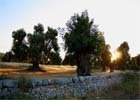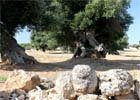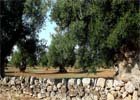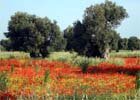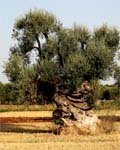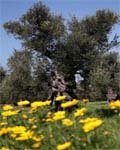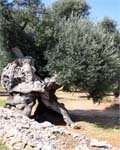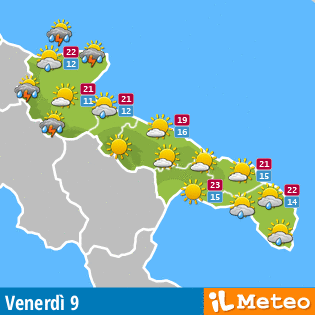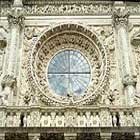Age-old olive grove
Age-old olive trees with crooked trunks: real sculptures of nature
The olive trees with their beauty and charm, transmitted by secular bent trunks, representing the history of Puglia through their thousand-year presence in the area. This typical testifies that the trees were not planted but grafted, and that their position is still to be decided by nature.
Symbol of the whole Apulian flora
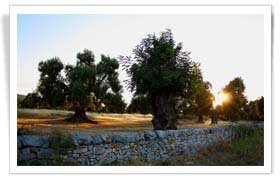
The olive tree is considered the symbol of the whole Apulian flora: it characterizes the territory from the Tavoliere to the end of the Salento with endless expanses. Early cultivations came from the deforestation which spared only the wild olives. This type of cultivation is particularly diffused in the area of Monopoli where plants and trees are placed without following a precise scheme.
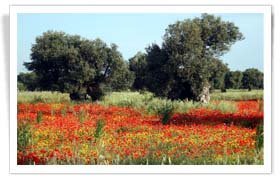
Other zones are marked by different characteristics, in particular in the area of Fasano: here we find trees with colossal trunks which appear as real sculptures thanks to the work of the nature during the past centuries; they are distant 18 meters one another (60 Roman feet) and have been placed “a dimora” according to the RES RUSTICA that is to say the first treaty about agronomy written by Lucio Giunio Moderato Columella, who was born in Spain and lived at the time of Jesus.
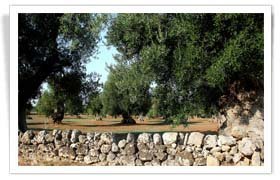
The main varieties diffused in our region can be considered autochthonous having adapted themselves to the land and weather characteristics of our territory realizing a natural selection which made them resistant to parasites ensuring a high oil return.
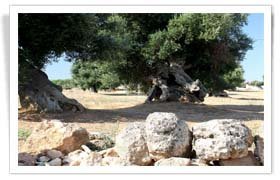
Most varieties belong to the family of the Ogliarole, whose name comes from the territory where they are cultivated (Ogliarola barese, Cima di Bitonto, Paisana, Cima di Mola and Ogliarola salentina). Other varieties are the Peranzana, the Coratina and the Cellina di Nardò. Apulian olive trees represent the oldest group of plants with the largest number of millenarian specimen in the world. Most ancient olive groves are concentrated between the provinces of Bari and Brindisi where, close to the via Traiana (which linked Rome to the port of Brindisi), the oil culture has promoted since the Roman age the development of numerous settlements and hundreds of hypogean oil mills where the olives picked from the monumental trees became oil.

 Home PUGLIA
Home PUGLIA Places to visit
Places to visit Sea places
Sea places Ancient villages
Ancient villages Salento
Salento Gargano
Gargano Tremiti Islands
Tremiti Islands Valle D'Itria
Valle D'Itria Lecce Baroque
Lecce Baroque Holy sites
Holy sites Olive groves
Olive groves Sitemap
Sitemap